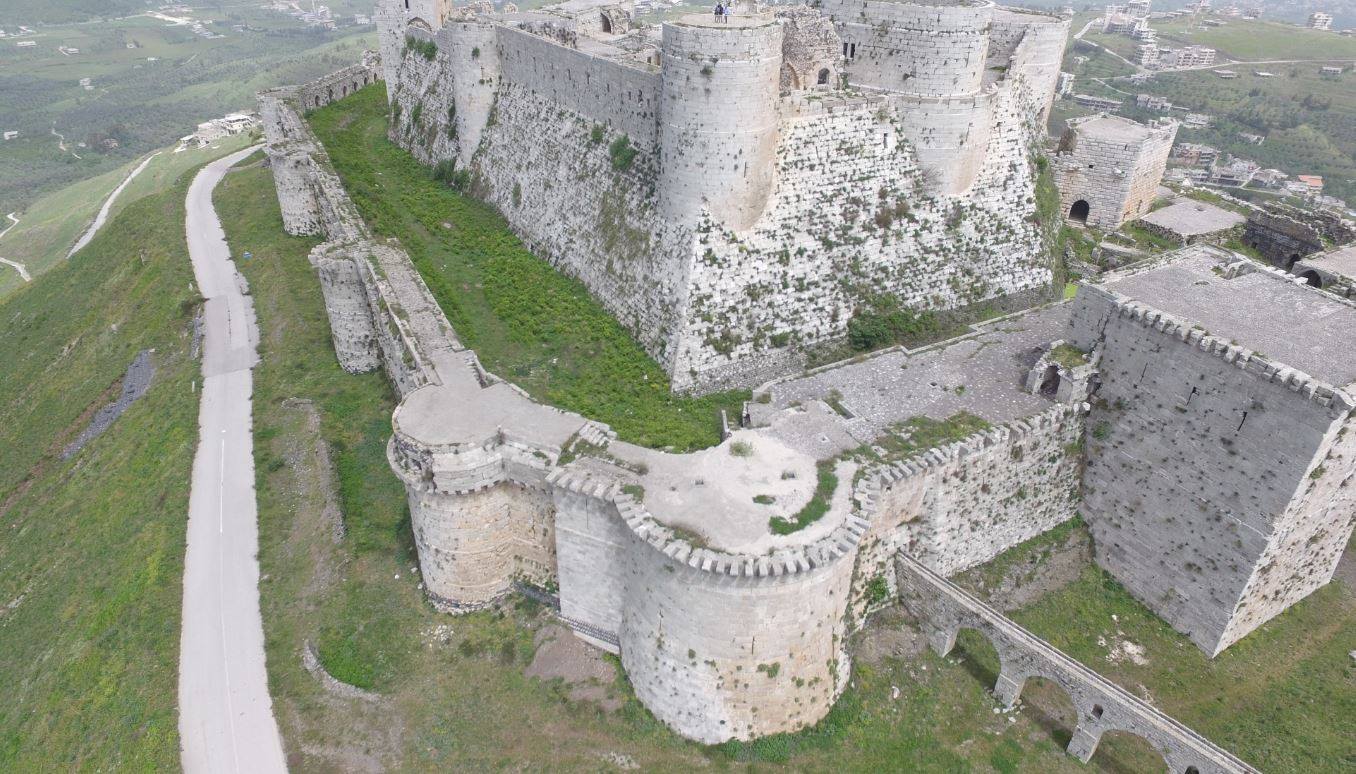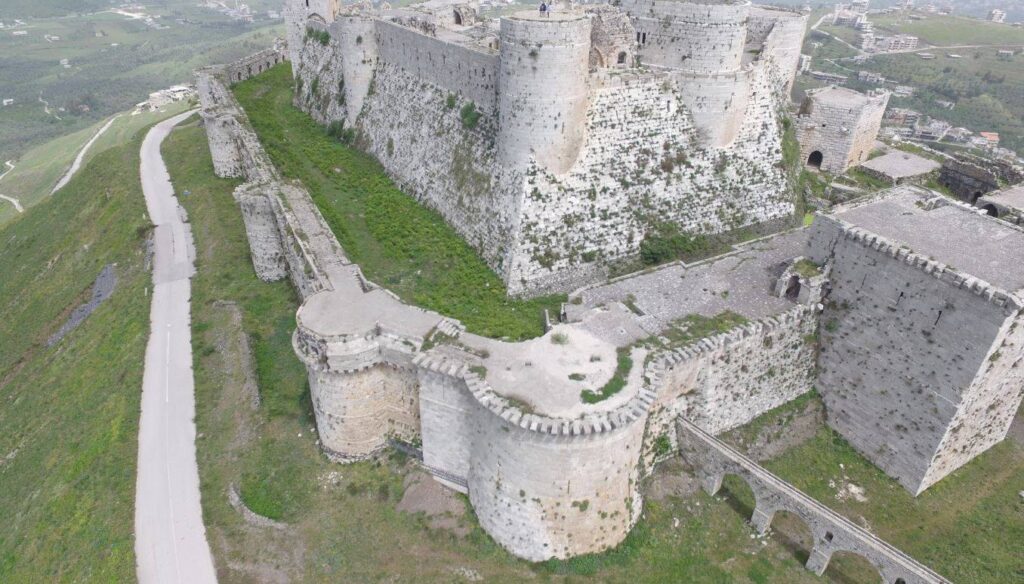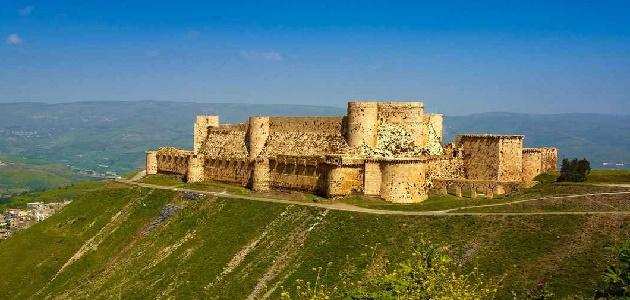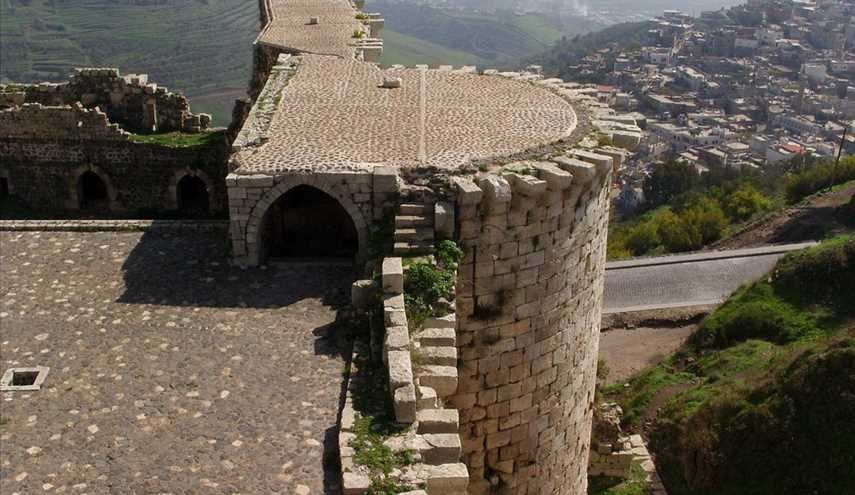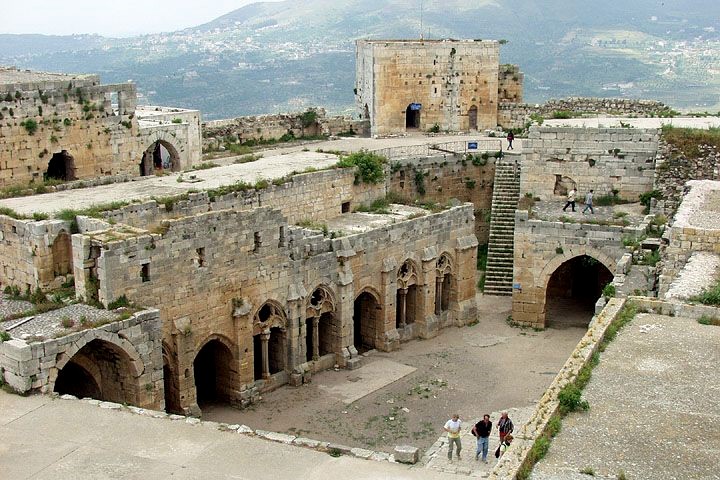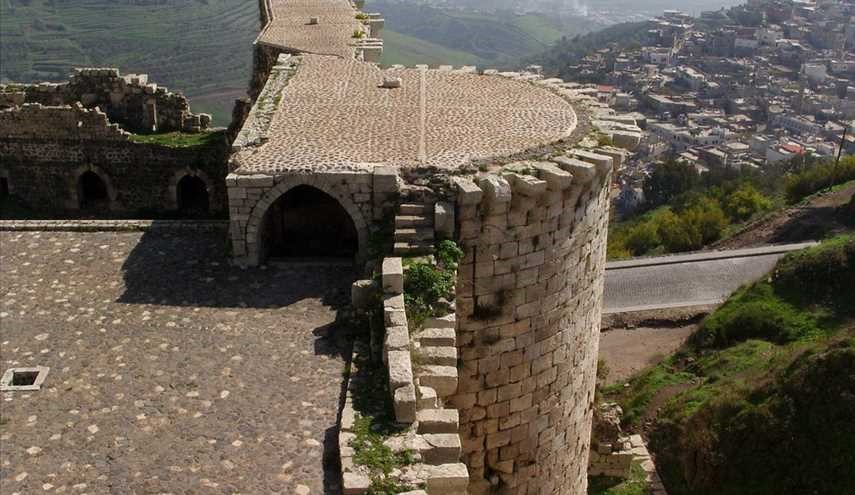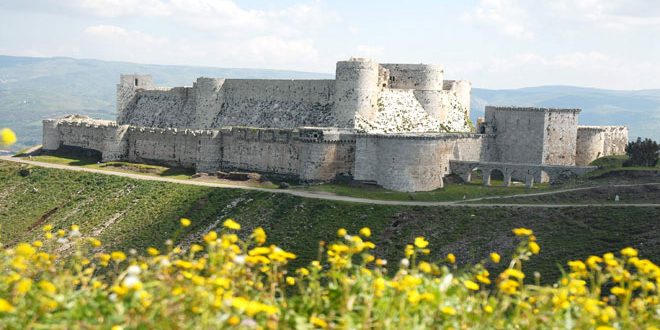Perched on a volcanic hill overlooking the Homs coastal passage, Krak des Chevaliers was first built by the Knights Hospitaller starting in 1142 CE, becoming the most powerful Crusader fortress in the Levant. The castle consists of two concentric walls: an outer one with eight semi-circular towers and an inner one enclosing the Knights’ church, dining halls, and supply cellars. Inside, a rock-cut drainage system channels water into a 90-meter-long cistern. Sultan Baibars captured it in 1271 CE, reinforcing its defenses and building a small mosque with a stone mihrab over the Knights’ church. The fortress underwent the longest modern restoration efforts (1936-1964) under the supervision of Georges Tisserand, who numbered every stone. It was inscribed on the UNESCO World Heritage list in 2006.
The site is considered one of the finest examples of a blend of Crusader and Islamic defensive architecture and a key point of reference for research on pilgrimage and trade routes between the Syrian coast and the interior.


